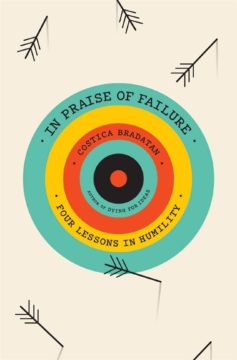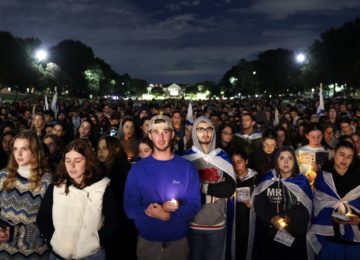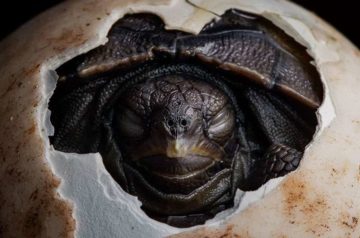Rachel Gorman in The Scientist:
 An insect lands on the open leaves of a Venus flytrap plant, drawn to an appealing scent. It noses around and accidentally brushes one of the trap’s trigger hairs. An action potential shoots across the leaf blade. The insect keeps moving and bends another trigger hair, propagating a second action potential; suddenly, the leaves snap shut, trapping the insect, enveloping it in digestive juices, and absorbing the bug’s rich nutrients. How these two light touches trigger abrupt shutting of the leaves has been hypothesized, but never proven. Now, in a new study published in Current Biology, a team of researchers knocked out two ion channels, making it harder to produce action potentials and proving the channels’ importance in leaf closing.1 “The paper is a very big technical advance,” said plant biophysicist Rainer Hedrich at the University of Wurzburg who was not involved in the study. “It is possible to knock out genes in an excitable plant and test hypotheses.”
An insect lands on the open leaves of a Venus flytrap plant, drawn to an appealing scent. It noses around and accidentally brushes one of the trap’s trigger hairs. An action potential shoots across the leaf blade. The insect keeps moving and bends another trigger hair, propagating a second action potential; suddenly, the leaves snap shut, trapping the insect, enveloping it in digestive juices, and absorbing the bug’s rich nutrients. How these two light touches trigger abrupt shutting of the leaves has been hypothesized, but never proven. Now, in a new study published in Current Biology, a team of researchers knocked out two ion channels, making it harder to produce action potentials and proving the channels’ importance in leaf closing.1 “The paper is a very big technical advance,” said plant biophysicist Rainer Hedrich at the University of Wurzburg who was not involved in the study. “It is possible to knock out genes in an excitable plant and test hypotheses.”
More here.

 JULIEN CROCKETT: I want to start with a quote from the end of your book where you discuss the final stage of life—death—and what happens with the failures we accumulate along the way:
JULIEN CROCKETT: I want to start with a quote from the end of your book where you discuss the final stage of life—death—and what happens with the failures we accumulate along the way: Husserl’s The Crisis of European Sciences and Transcendental Phenomenology is widely regarded as both his most accessible and most influential work, written under the shadow of fascist ideology looming over Europe. Based on lectures given in 1935 at Charles University and the German University in Prague, Husserl opens by addressing the ‘Crisis? What crisis?’ question that many in the audience must have been asking themselves:
Husserl’s The Crisis of European Sciences and Transcendental Phenomenology is widely regarded as both his most accessible and most influential work, written under the shadow of fascist ideology looming over Europe. Based on lectures given in 1935 at Charles University and the German University in Prague, Husserl opens by addressing the ‘Crisis? What crisis?’ question that many in the audience must have been asking themselves: Disputes arising from geopolitical crises occur in numerous social settings, but colleges are especially vulnerable. First, campuses by their nature are (or should be) spaces for robust debate on contested topics, strongly protected by free-speech norms. Second, students and faculty represent diverse nationalities, religions, cultures, and belief systems. Third, college leaders are expected by many to express opinions on political and social issues on behalf of the institution.
Disputes arising from geopolitical crises occur in numerous social settings, but colleges are especially vulnerable. First, campuses by their nature are (or should be) spaces for robust debate on contested topics, strongly protected by free-speech norms. Second, students and faculty represent diverse nationalities, religions, cultures, and belief systems. Third, college leaders are expected by many to express opinions on political and social issues on behalf of the institution. In her prime, there was no one—no man or woman, no one wearing Team Red or Blue, no one brandishing centrist or progressive labels—who could rival Dianne Feinstein. She knew what it was like to lose; even before arriving in Washington, she had two failed bids for San Francisco mayor and one for California governor under her belt, not to mention the trauma of finding her friends immediately after a former colleague assassinated them in San Francisco City Hall back in 1978, all of which informed her desire to make the wins she did notch count all the more.
In her prime, there was no one—no man or woman, no one wearing Team Red or Blue, no one brandishing centrist or progressive labels—who could rival Dianne Feinstein. She knew what it was like to lose; even before arriving in Washington, she had two failed bids for San Francisco mayor and one for California governor under her belt, not to mention the trauma of finding her friends immediately after a former colleague assassinated them in San Francisco City Hall back in 1978, all of which informed her desire to make the wins she did notch count all the more. ChatGPT, the AI language model capable of mirroring human conversation, may be better than a doctor at following recognized treatment standards for clinical depression, and without any of the gender or social class biases sometimes seen in the primary care doctor-patient relationship, finds research published in the open access journal Family Medicine and Community Health. However, further research is needed into how well this technology might manage severe cases as well as potential risks and
ChatGPT, the AI language model capable of mirroring human conversation, may be better than a doctor at following recognized treatment standards for clinical depression, and without any of the gender or social class biases sometimes seen in the primary care doctor-patient relationship, finds research published in the open access journal Family Medicine and Community Health. However, further research is needed into how well this technology might manage severe cases as well as potential risks and  About
About  Rich, high-fat foods such as ice cream are loved not only for their taste, but also for the
Rich, high-fat foods such as ice cream are loved not only for their taste, but also for the  Even in the wilting heat of a late-stage New York summer, Adjei-Brenyah cuts a striking figure; a security guard pulls away from corralling unruly tweens just to compliment his hat, a trilby in rich forest green. The guard probably has no reason to know that this elegant, soft-spoken man who quite literally would not hurt a fly is the same one who’s published two of the most explosive and unlikely literary sensations of the past five years—the astonishing 2018 story collection
Even in the wilting heat of a late-stage New York summer, Adjei-Brenyah cuts a striking figure; a security guard pulls away from corralling unruly tweens just to compliment his hat, a trilby in rich forest green. The guard probably has no reason to know that this elegant, soft-spoken man who quite literally would not hurt a fly is the same one who’s published two of the most explosive and unlikely literary sensations of the past five years—the astonishing 2018 story collection  Some scientific discoveries matter because they reveal something new — the double helical structure of DNA, for example, or the existence of black holes. However, some revelations are profound because they show that two old concepts, once thought distinct, are in fact the same. Take James Clerk Maxwell’s equations showing that electricity and magnetism are two aspects of a single phenomenon, or general relativity’s linking of gravity with a curved space-time.
Some scientific discoveries matter because they reveal something new — the double helical structure of DNA, for example, or the existence of black holes. However, some revelations are profound because they show that two old concepts, once thought distinct, are in fact the same. Take James Clerk Maxwell’s equations showing that electricity and magnetism are two aspects of a single phenomenon, or general relativity’s linking of gravity with a curved space-time. Hamas’s random
Hamas’s random  AI is developing rapidly. ChatGPT has become the
AI is developing rapidly. ChatGPT has become the  When Charles Darwin made the famous voyage that took him to the Galapagos, he marveled at the giant tortoises that lumbered across the islands. He tried to ride them. He ate their flesh. He followed the paths they created in their ponderous travels. And he mused at their differing shapes on different islands, insights that helped steer him toward his theory of evolution by natural selection.
When Charles Darwin made the famous voyage that took him to the Galapagos, he marveled at the giant tortoises that lumbered across the islands. He tried to ride them. He ate their flesh. He followed the paths they created in their ponderous travels. And he mused at their differing shapes on different islands, insights that helped steer him toward his theory of evolution by natural selection. For years, Alzheimer’s conferences were like the obituary pages in the local newspaper: It’s where clinicians and researchers in the field went to find out the names of the latest promising drugs to die. Between 1998 and 2017 alone, 146 clinical trials of new Alzheimer’s drugs failed.
For years, Alzheimer’s conferences were like the obituary pages in the local newspaper: It’s where clinicians and researchers in the field went to find out the names of the latest promising drugs to die. Between 1998 and 2017 alone, 146 clinical trials of new Alzheimer’s drugs failed. Israel has ordered more than a million people to leave northern Gaza, presumably to prepare for an imminent ground offensive. Its military strategists appear to be planning the depopulation and reoccupation of at least part of an area home to around 2.3 million people —
Israel has ordered more than a million people to leave northern Gaza, presumably to prepare for an imminent ground offensive. Its military strategists appear to be planning the depopulation and reoccupation of at least part of an area home to around 2.3 million people —